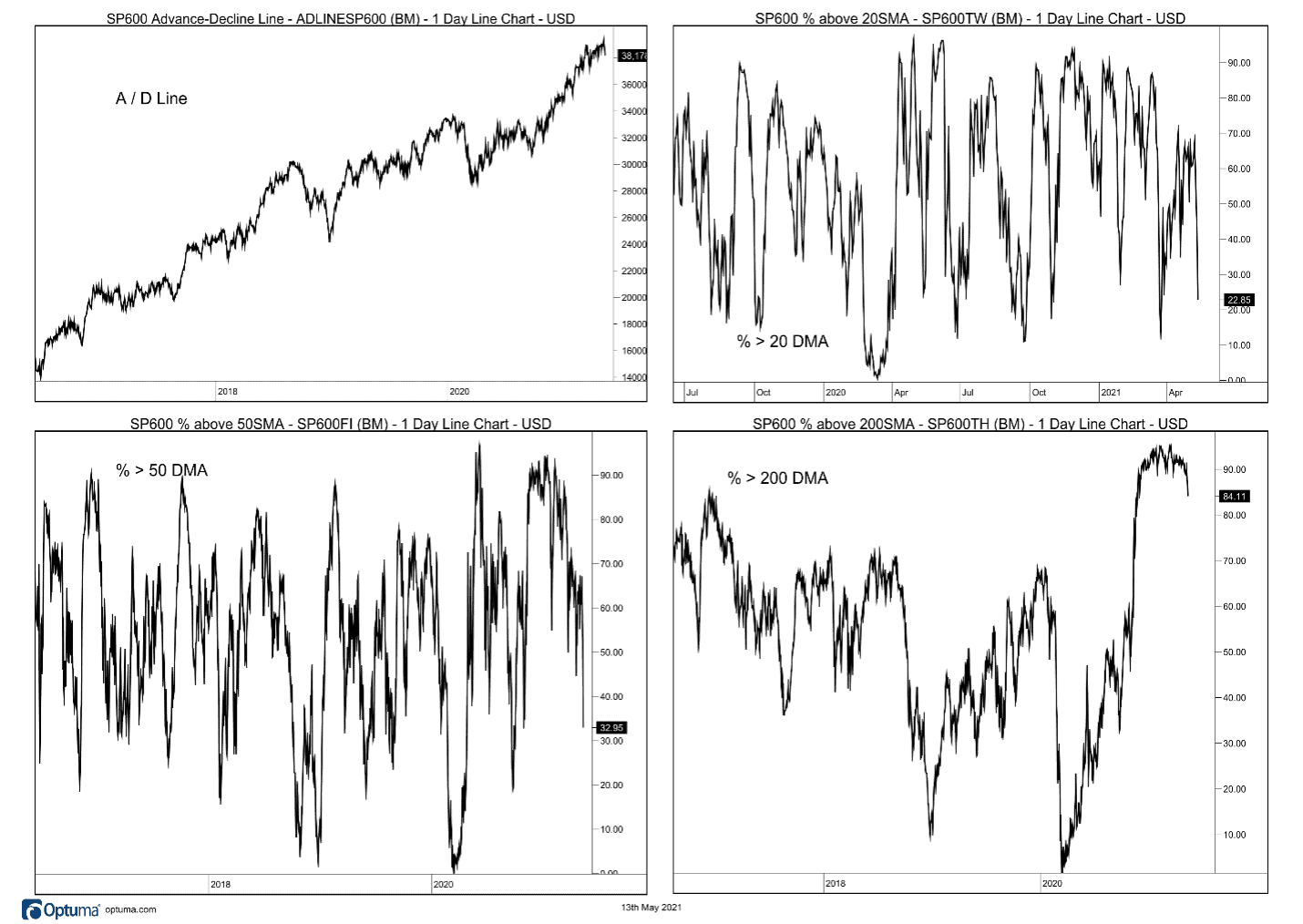
Key Points
- Credit Markets Not Showing Signs of Stress
- Breadth Weakens as Equities Pullback
- Short-Term Metrics Not Yet at Washed Out Levels
- Long-Term Indicators Remain Strong
- Equal Weight S&P 500 Leading Cap Weight is a Bullish Breadth Dynamic
Chart in Focus:
While many are quick to see any pullback as the first stage of a broader decline, we are of the view that this week’s trading is simply a pause within a bigger uptrend. Deep corrections simply do not occur from all-time highs that are confirmed by breadth. In addition to the longer-term breadth metrics remaining in good positions (highlighted below), we are not seeing signs of stress in the credit markets. The BofA Merrill Lynch High Yield CCC or Below Option-Adjusted Spread remains at extremely low levels. This measure of high yield credit relative to treasuries tends to begin moving higher before there is a major downturn in equities.
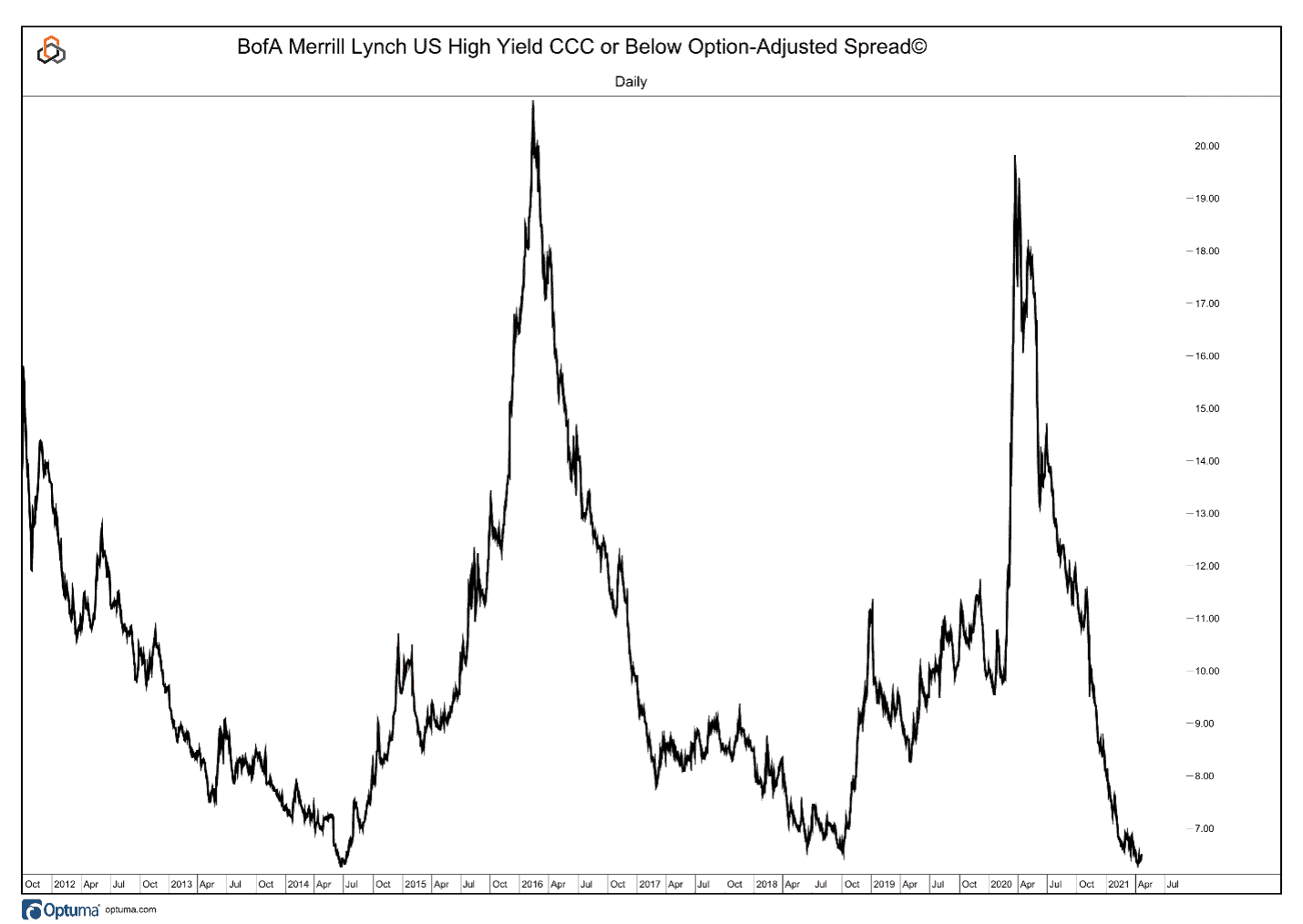
S&P 500 Breadth
The Advance/Decline Line for the S&P 500 traded to a new high with the index last week and has now begun to move lower as equities have come under pressure this week. This indicator remains above the rising 50-day moving average, but the index is in the process of testing its own moving average.
Bullish investors want to see the S&P 500 hold above the 4,000 level while the A/D Line remains above the 50-day to have confidence that the current pullback is nothing more than a pause in the uptrend.
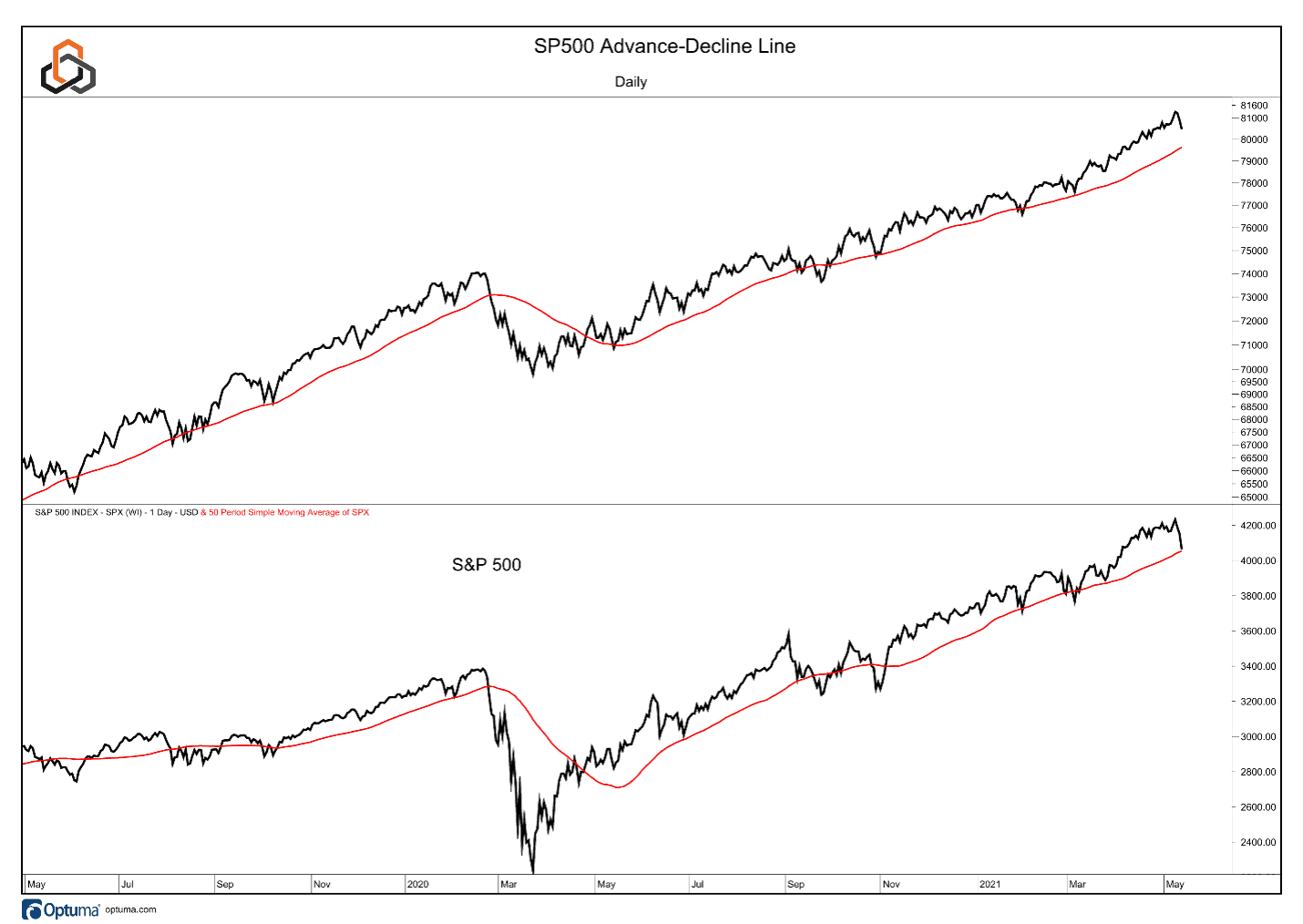
At the same time, the S&P 500 Advancing – Declining Volume Line has pulled back to test its own 50-day moving average.
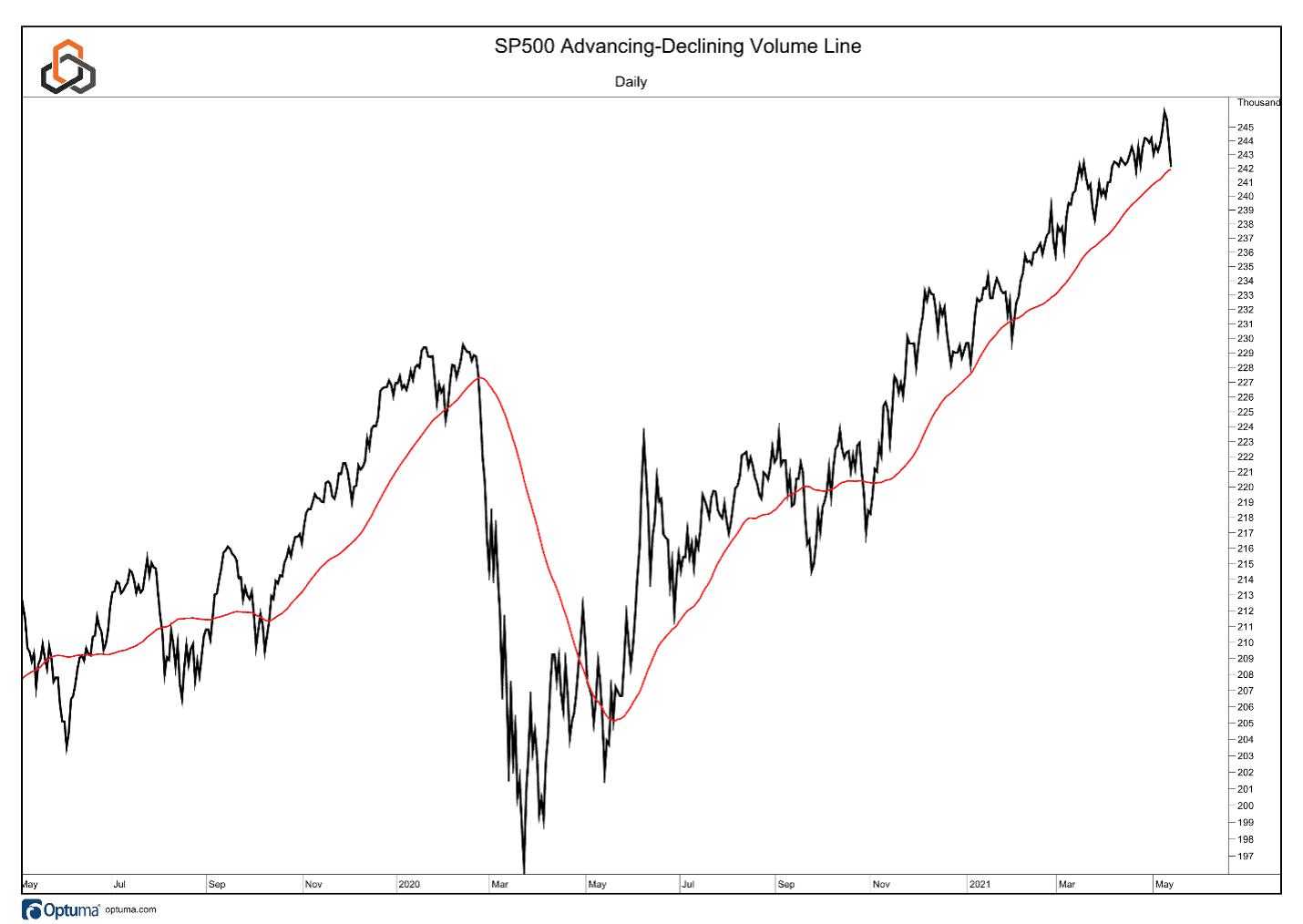
The trends for these indicators remain to the upside but sustained breaks below the moving averages would be a signal that the tides are turning.
After spending the past few weeks above the 90% level, the percentage of stocks in the S&P 500 which are trading above their respective 200-day moving averages has fallen to 88.93%. Since January 2011, there have only been 13 instances where this metric crossed below 90% while the index was above its own 200-day moving average. Over the next month of trading the S&P 500 has been higher 75% of the time for a median gain of 2.60%.
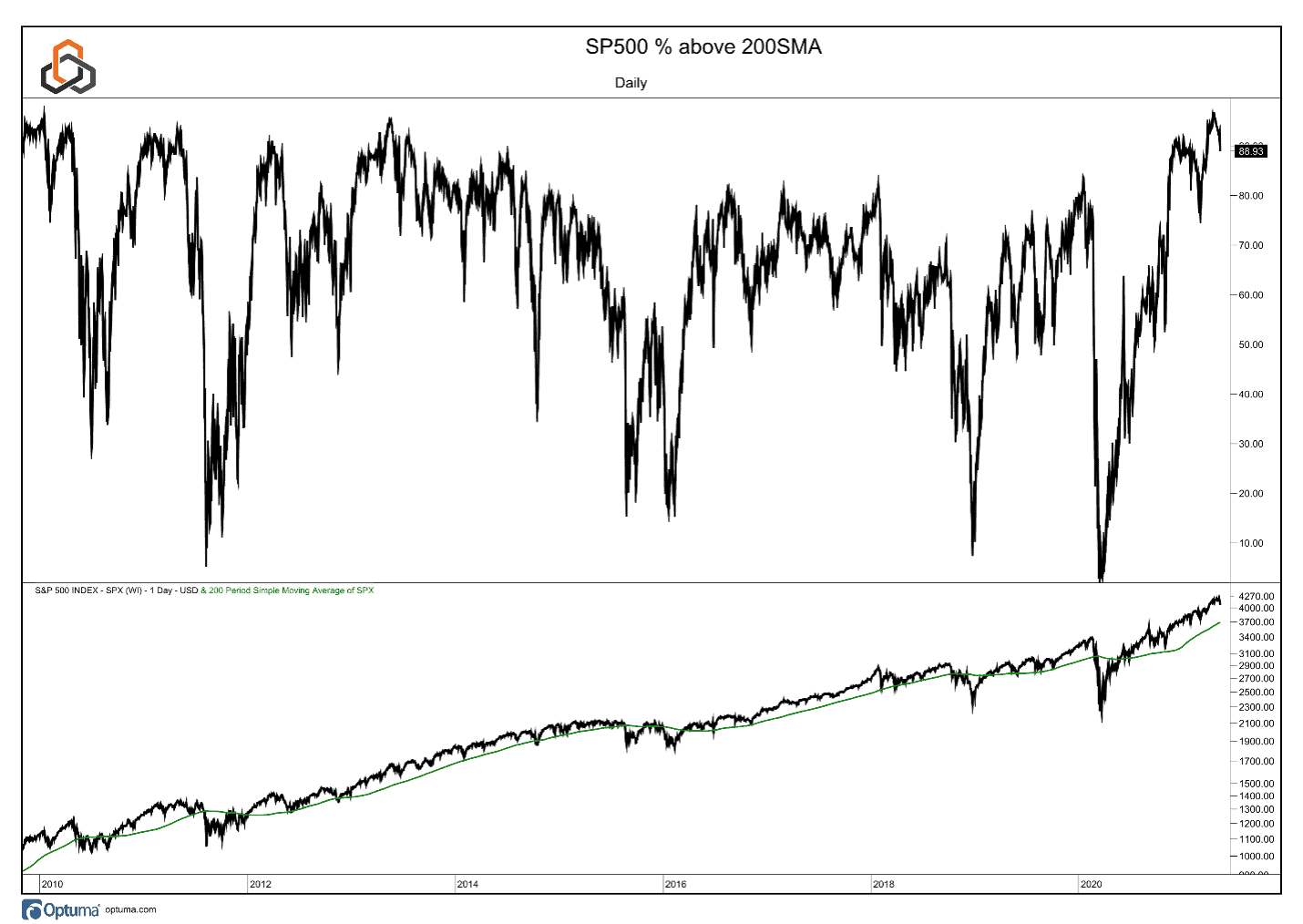
As the index tests the rising 50-day moving average, we note that the percentage of stocks trading above their own 50-day moving averages has fallen to 64.62% from 79.41% last week. Readings above 60% represent that a healthy majority of stocks are in intermediate term uptrends. A close, for the index, below the 50-day while this metric falls below 60% would be a sign that trends are shifting in this timeframe.
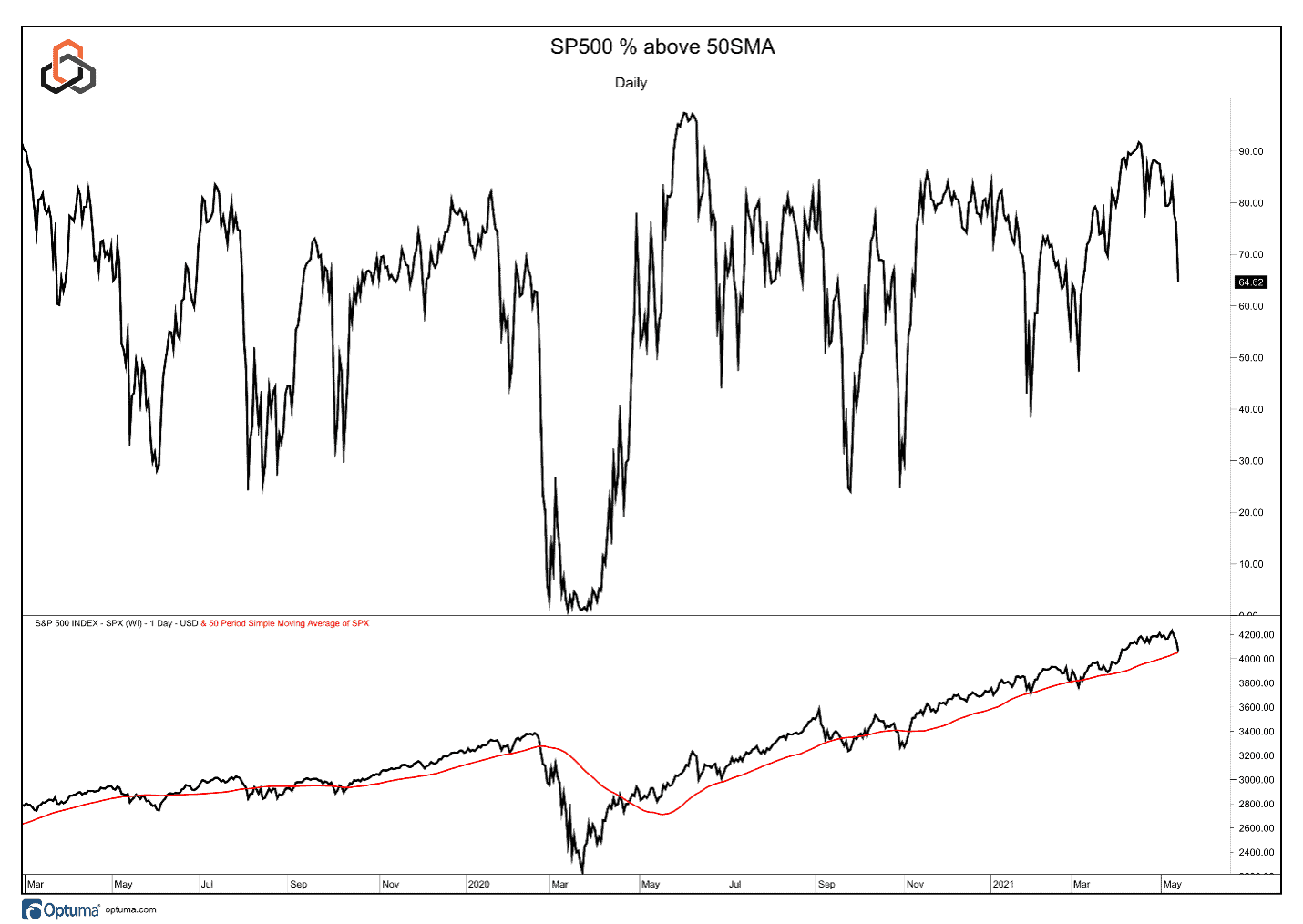
In the short-term, the percentage of stocks trading above their respective 20-day moving averages has fallen to 36.96%, from 63.17% last week, while the S&P 500 has undercut its own 20-day moving average. Over the past year, meaningful pullbacks in the index have tended to see this indicator bottom in the 10% – 20% range while more shallow pullbacks have stopped with this metric between 40% and 50%.
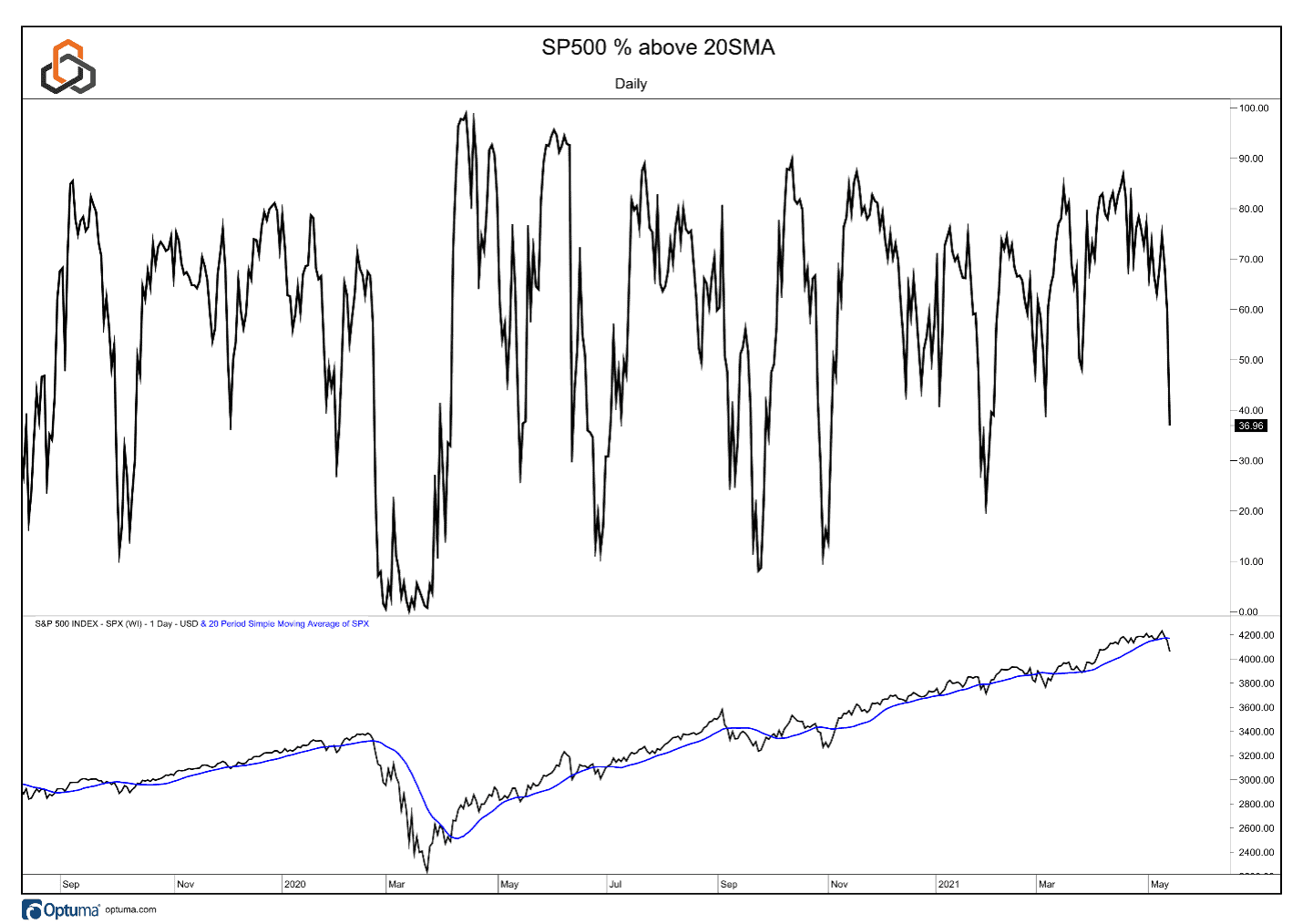
As the S&P 500 (Cap Weighed) pulls back this week, it is interesting to note that the Equally Weighted S&P 500 continues to outperform. The ratio is trading above the rising 50-day moving average as it tests the resistance zone that dates to 2012. A breakout would signal that leadership remains in the smaller names within the index, which would signal that the current pullback is a minor pause in the S&P 500’s uptrend.
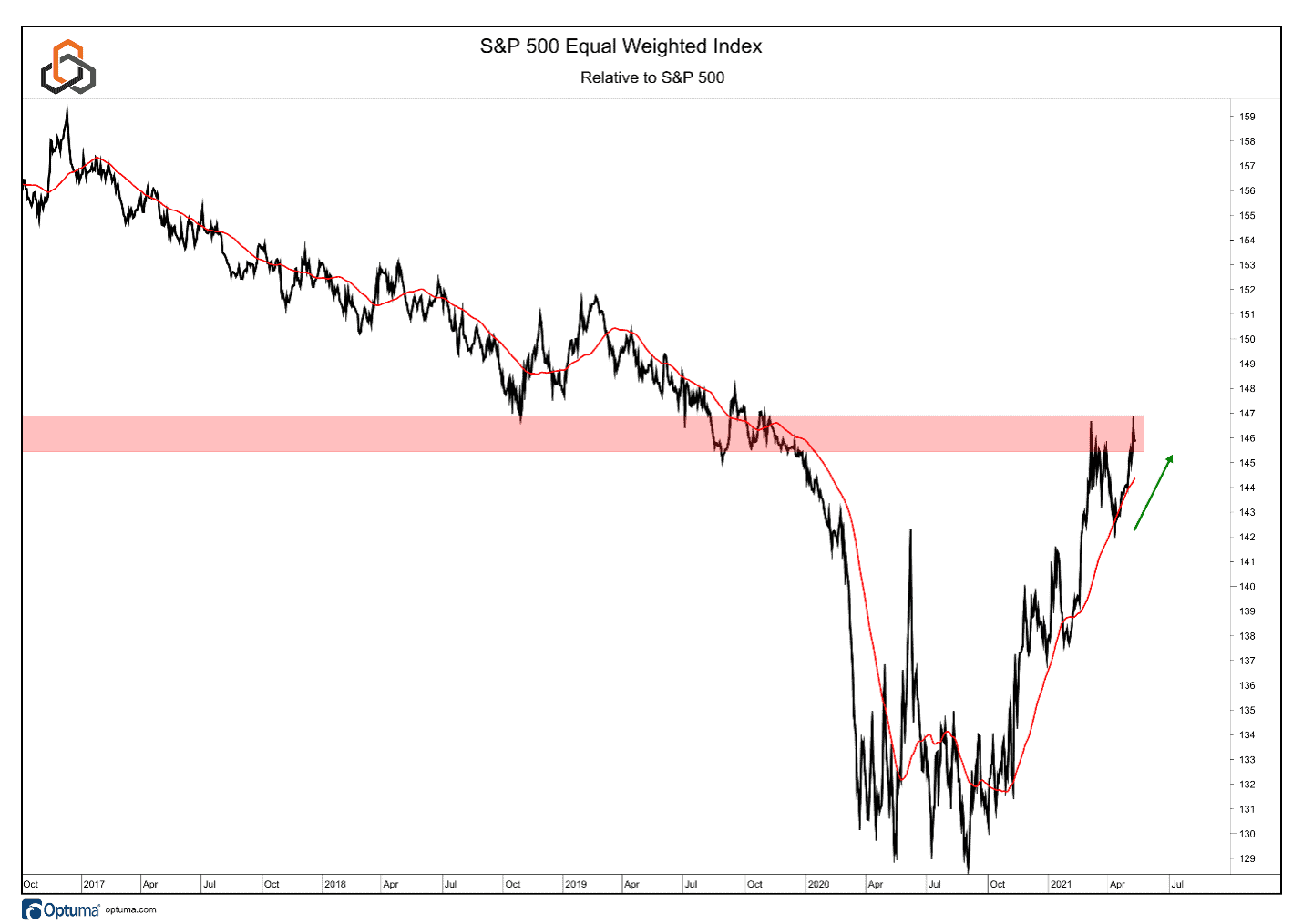
NYSE Breadth
As we noted last week, the breadth metrics for the NYSE have not been as strong as what was being seen for the S&P 500. The percentage of stocks above their respective 20, 50, and 200-day moving averages all failed to confirm equity highs last week. The Advance/Decline Line remains in an uptrend but the metrics across the different timeframes have all weakened. Important lows over the past year have seen the percentage of stocks above their respective 20-day moving averages bottom between 10% and 20%, while minor pullbacks have seen this metric bottom in the 30% to 40% range. The current reading is 29.71%.
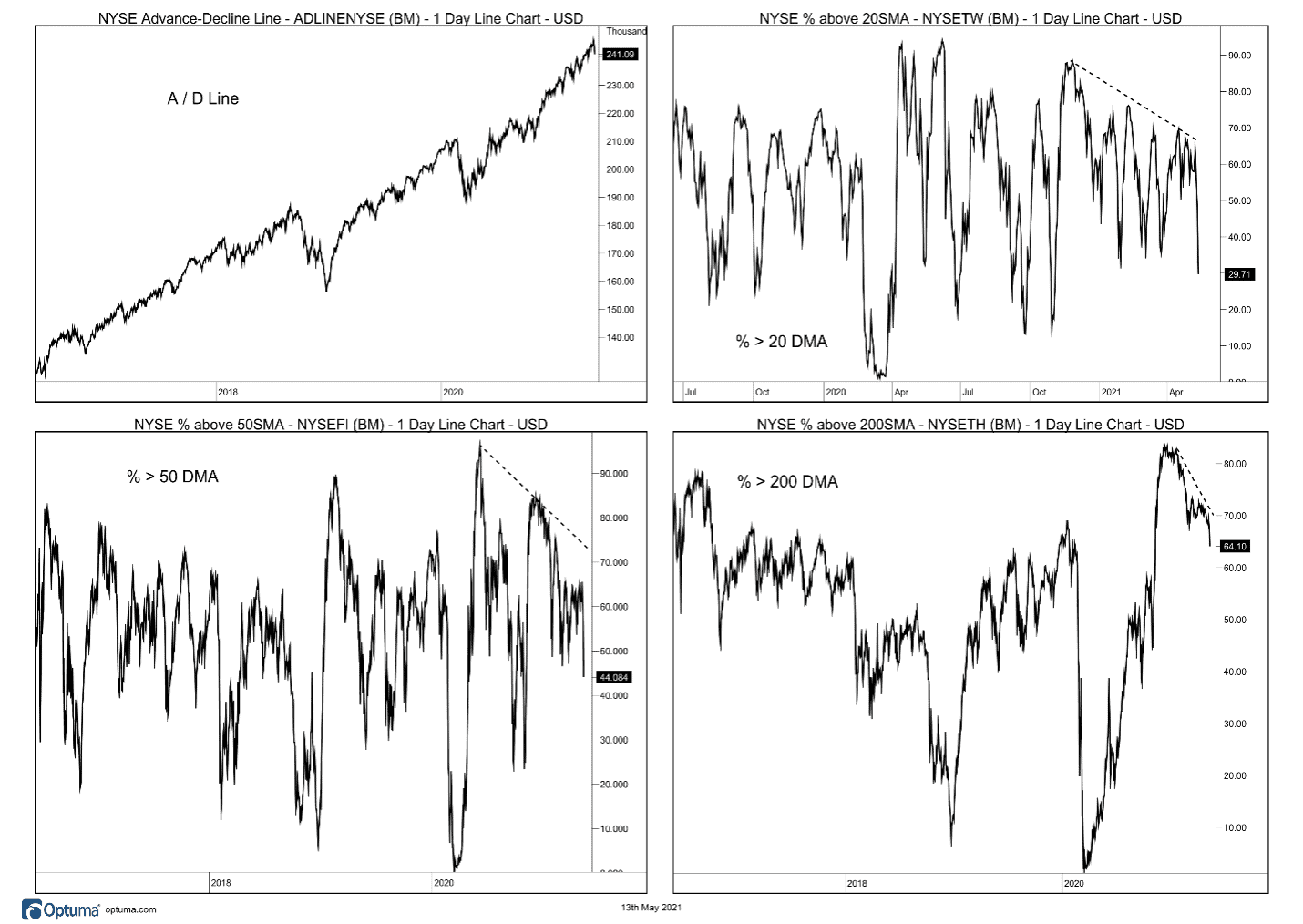
Small Cap Breadth
Breadth metrics for the S&P 600 have also come under pressure this week. Like the S&P 500 and the NYSE, the Advance/Decline Line remains in an uptrend. At the same time, the percentage of stocks trading above their 20-day moving averages has sustained the most damage but is not yet at levels that have tended to mark important lows in the equity prices over the past year. On a longer time frame, the trends remain healthy, with 84.11% of stocks trading above their respective 200-day moving averages.
